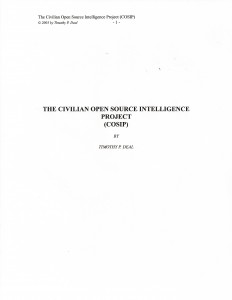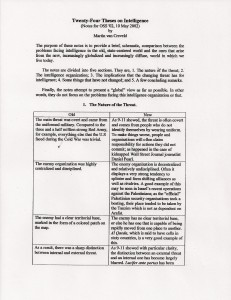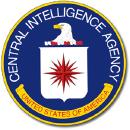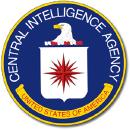
In 2003 citizen Timothy Deal tried to help the Administration with this idea. He never heard back.
I will not replicate all that is at www.oss.net and to a much lesser extent, www.earth-intelligence.net, but do want to recognize a handful of extraordinary individuals by isolating their especially meritorious contributiions to the long-running debate about national intelligence reform and re-invention.

Along with Colin Gray, Steve Metz, and Max Manwaring, Martin van Creveld is among the intellectual giants of our era with respect to strategic reflection, and he stands alone at the intersection of strategy, logistics, technology, command & control, and the art of decision-making under conditions of great uncertainty.
His contribution to OSS '02 was created especially for this multinational group, and we believe it will stand the test of time as a seminal work for those who seek to transform intelligence from a bureaucracy that measures inputs to a cosmic force that determines outcomes favorable to all concerned.

The Global Futures Partnership (GFP) is a strategic “think and do tank” that undertakes unclassified global outreach for CIA and other Intelligence Community elements on the most important issues facing the intelligence community today and in coming years. It conceptualizes and implements interdisciplinary and multi-organizational projects on key intelligence issues with leading thinkers from academia, business, strategy, and intelligence consultants.
Below is the citation for the award given to the visionary, founder, and core catalyst within the GFP, followed by two CIA seals: the one on the left leads to the pro forma page on GFP, sadly not offering access to its unclassified and often brilliant productions over the past several years, and the one on the left offers a link to a presentation on “Meeting 21st Century Transnational Challenges: Building a Global Intelligence Paradigm” by Roger George, possibly the most tangible evidence of GFP's influence on CIA's leadership.
OSS '02: 21st Century Emerging Leadership Award. Global Futures Partnership, Central Intelligence Agency. Under the leadership of Carol Dumaine with her extraordinary vision, the Global Futures Partnership has created strategic learning forums bringing the rich perspectives of the outside world into the classified environment in a manner never before attempted. This official but revolutionary endeavor nurtures an outside-in channel for integrating a diversity of perspectives. It is a vanguard toward a future in which the lines between national and global intelligence, and between governmental and nongovernmental intelligence, are blurred into extinction.


The GFP is not to be confused with the Open Source Center (OSC). The first is a visionary outreach elements that seeks to share information and achieve multi-national sense-making, in one instance working with up to 35 countries. The OSC is a bureaucratic unit that classifies everything it creates and refuses to engage with any countries other than the standard English-speaking allies and a couple of others totalling eleven including the USA, Canada, the UK, Australia, you get the idea….
The CIA leadership never properly supported the GFP. Its vision

There are two ways of looking at ICTs: as an instrument, and as an industry. As an instrument, affordable and usable ICTs can indeed transform the way societies work, entertain, study, govern and live – at the individual, organizational, sector, vocational and national levels. As an industry, ICTs represent a major growing economic sector covering hardware, software, telecom/datacom and consulting services.
Through both lenses – industry and instrument – the performance of developing nations lags that of developed nations, but interesting patterns of variation and pockets of excellence are emerging. For instance, countries like India and the Philippines have ICT industries that are exporting software and attracting outsourcing contracts – but they also have looming digital divides where ICTs are not accessible or affordable as instruments for a majority of the population.
This paper charts the industry and instrument aspects of ICTs in developing nations, using a comparative framework developed over the years by the author called the “8 Cs” of the digital economy (words beginning with the letter C): connectivity, content, community, commerce, culture, capacity, cooperation and capital (see below).

What does the twenty-first century “information society' mean for all of us? This paper will examine information society developments primarily from an industrialized country perspective. However, it will acknowledge that the spread of networks means that developments in the industrialised countries have major implications for developing countries.
The paper will consider: 1) the key determinants of a ‘knowledge-driven economy' and what this means for the broader concept of an ‘information society' including the structure of information and communication technology investment, the system features of the new networks, the role of learning and new information exchange models and the weak links in the diffusion pathway. 2) the diffusion pathways for information and communication technologies and advanced networks will include an examination of business, government and citizen use of the new networks. 3) policy and regulatory priorities will emphasise the need for learning to acquire new skills and competencies, the need to reduce constraints on e-service delivery markets, and importance of improved monitoring of information society developments. 4) the potential for fostering public/private partnerships for mobilising information society developments for social and economic benefit. This section will give particular attention to the structure of incentives for public and private organisations to engage in such partnerships and the likelihood that such partnerships can substantially stimulate investment in sustainable network applications and services. 5) The paper will conclude with some observations on the dominant trends and the extent to which the twenty-first century ‘information society' is likely to perpetuate existing asymmetries or give rise to a more equitable distribution of resources.

ABOUT
The following key issues will be explored under this topic:
1. The Nature of the Problem
A) The vulnerabilities of national and international infrastructures B) Infrastructure dependencies C) Infrastructure failures and attacks D) Models for information attacks E) The international dimensions of the problem F. The need for international cooperation
2. Strategic Defence Options
A) Preventing an attack B) Thwarting an attack C) Limiting damage D) Reconstituting after an attack E) Passive and active defences F) Some specifically international problems
3. Forms of International Cooperation
A) Standards B) Information Sharing C) Halting cyber attacks in progress D) Harmonizing legal systems E) Providing assistance to developing nations
4. Finding a Suitable Framework for International Cooperation
A) An ideal model B) Necessary characteristics of an approximate real-world construction C) Some difficult problems to overcome
ABOUT
In the past decade, governments in both rich and middle-income countries have invested enormously in ICT in education, especially in schools. Universities have also invested, sometimes for the benefit of students or administrators on their campuses, and sometimes to facilitate distance learning, which has expanded rapidly, especially for the delivery of MBA programmes in the developed world and for educational expansion in general in the developing world. Finally, many employers in both the public and private sectors have experimented with ICT to deliver job training.
ICT in education holds out much promises – of lower costs, wider access and more precise delivery of the right course at the right level and the right time. But experience so far has been mixed. This paper will review what has been achieved so far and examine the possibilities for the future and the scope of overcoming some of the challenges that have emerged.
Information is uneven, with a large number of studies of distance learning and some of ICT in schools, but less on its use on campus in universities and for job training. Good information is also relatively rare for the two most common uses of ICT in universities, for the purpose of giving students online access to publications (i.e. as an extension of the library) and for streamlining administration.
Under this topic, the following key issues will be explored:
1. What do we mean by education? What kind of human capital are we trying to build?
2. Distance Learning. What do we mean by distance learning? What are the different forms of distance learning?
3. Technology can be used in different ways. What are the uses of ICTs in building human capital? Where has it been well developed and where is it relatively new? Why use ICTs? To cut costs? To improve quality?
4. Evaluating ICTs. The difficulties involved in evaluation. Compared with what? How well are other educational interventions evaluated?
5. The benefits of ICTs. Are educational outcomes improved? Can courses be launched and updated more readily? How do ICTs enhance access to education?
6. The cost of ICTs.
7. What technological improvements would raise the impact of ICTs on education?